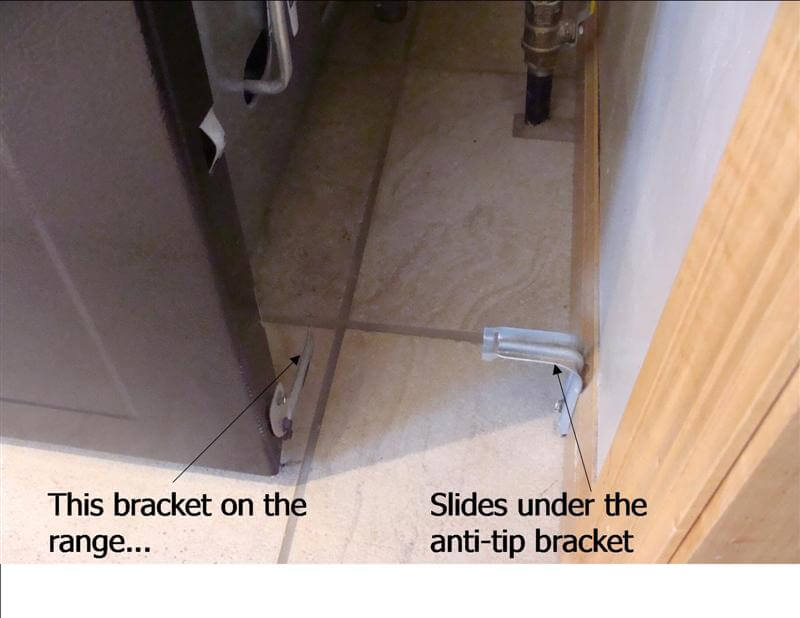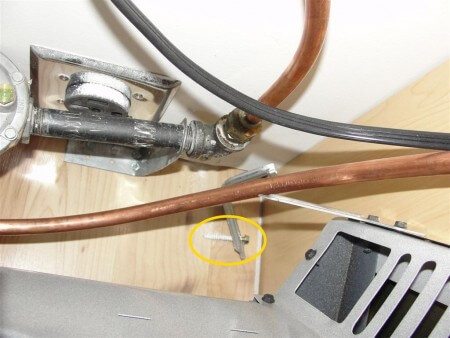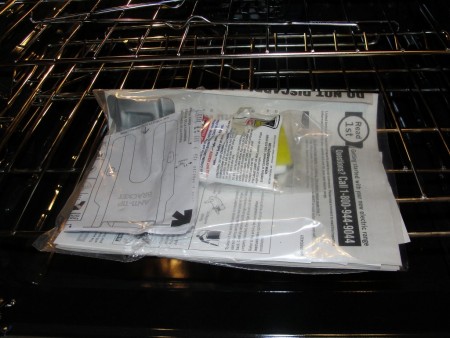This week’s question comes from another home inspector: “Where can I find the requirement for an anti-tip bracket on a range?”
Before I answer that question, I better explain what an anti-tip bracket is. In short, it’s an aptly-named device that keeps a range from tipping over. It’s about what you might imagine, and they come in a few different styles. Here’s one of them:
Do we really need these?
Anti-tip brackets are safety devices that started showing up in the late 1980s and became required by appliance manufacturers in 1991. According to the Consumer Product Safety Commission, there were 38 fatalities associated with ranges tipping over between 1980 and 2008. Over half of those involved children between the ages of one and five years old. The other large age group was elderly adults using the open range door for support.
Side note: anti-tip brackets may also help to protect young adults who boldly use their range as a piece of playground equipment 😉
This is something that many home inspectors check for and recommend adding if not present. The CPSC has a nice little sheet explaining how to check for the presence and proper installation of an anti-tip bracket: https://www.cpsc.gov/PageFiles/118037/5007tips.pdf. I find a lot of missing brackets, even in new construction homes. The anti-tip bracket pictured below was attached to the drywall only, which won’t do any good.
Whoever drove that screw into the drywall knew they didn’t hit anything, and their GaS level was clearly at about zero. I’d prefer to see no attempt even made, and I certainly see that a lot. The picture below shows a new range with the anti-tip bracket still sitting in its original packaging.
So back to question: are these required?
As I mentioned earlier, anti-tip brackets are required by manufacturers, but does this mean that they’re required by the building code? Indirectly, yes. If we turn to chapter 3 of the Minnesota Mechanical Code, we can find the following text under section 304.1:




Aaron Miller
June 20, 2017, 10:41 am
Reuben:
I really like your articles. One point you may have overlooked in this one is that the CPSC standards preempt the International Codes. From the Consumer Product Safety Act:
SEC. 26. [15 U.S.C. § 2075]
(a) Whenever a consumer product safety standard under this Act
is in effect and applies to a risk of injury associated with a consumer product, no State or political subdivision of a State shall have any authority either to establish or to continue in effect any provision of a safety standard or regulation which prescribes any requirements as to the performance, composition, contents, design, finish, construction, packaging, or labeling of such product which are designed to deal with the same risk of injury associated with such consumer product, unless such requirements are identical to the requirements of the Federal
standard.
This is reiterated in the ICC publication “Legal Aspects of Code Administration”.
Most of the country I have visited is under on version or the other of the ICC. IRC 102.4 corresponds to the citation in your article.
Best,
Aaron
Bob
June 20, 2017, 8:59 pm
My townhouse stove is not fastened. However, it is unbelievably there are so many people who need everything fastened, because they abuse or do stupid things. I believe TVs need to be fastened around little kids because parents will not teach their kids to behave and not act like animals. When my kids were growing up, we did a lot of remodeling and did not even have electrical plates over outlets. I instructed them and paid attention to them. Never once did they touch them or go near them. Other kids at other places I’ve been around I’m just astonished at the way they behave, not to mention how they wreck everything they are around and the parents are in la la land and can’t be bothered to control their offspring.